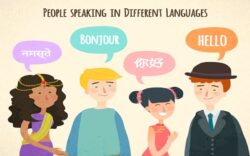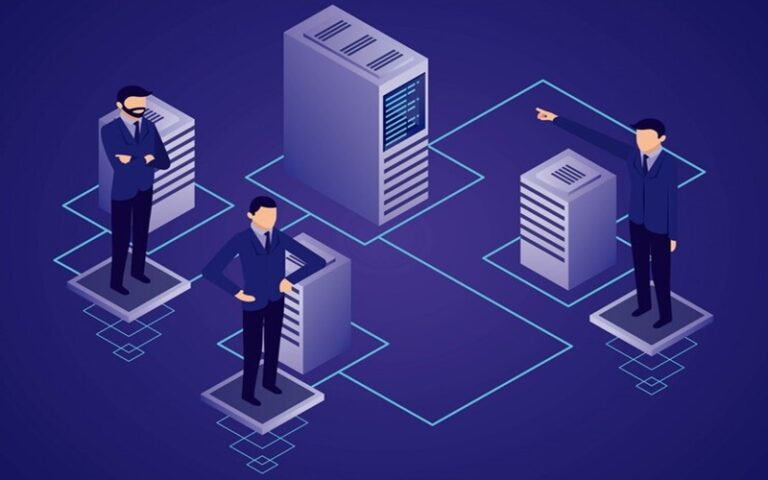In natural language processing (NLP), taxonomy, ontology, and knowledge graphs play critical roles in enabling machines to understand, categorize, and derive meaning from human language. These frameworks help structure linguistic data, provide context, and facilitate reasoning, making NLP applications more accurate and contextually aware.
- Taxonomy in Natural Language Processing
Definition: A taxonomy is a hierarchical classification system that organizes terms or concepts into categories and subcategories.
Role in NLP:
Text Categorization and Classification: Taxonomies can be used to classify text data into predefined categories. For example, news articles can be classified into categories like “Politics,” “Sports,” or “Technology.”
Named Entity Recognition (NER): Taxonomies assist in identifying and classifying named entities (e.g., people, places, organizations) in text into distinct categories. A taxonomy might categorize entities like “Person,” “Location,” “Organization,” etc.
Sentiment Analysis: By categorizing text into taxonomies of emotion or sentiment (e.g., “Positive,” “Negative,” “Neutral”), sentiment analysis can be more structured and accurate.
Example: In an e-commerce NLP system, a taxonomy might categorize product reviews into categories like “Electronics > Phones > Features > Battery Life,” allowing the system to extract specific insights based on user feedback about product attributes.
- Ontology in Natural Language Processing
Definition: Ontology in NLP defines a structured framework of concepts and their relationships, providing richer context beyond simple classifications.
Semantic Understanding: Ontologies enable NLP systems to understand the deeper meanings of words and phrases by providing a formal representation of the relationships between concepts. This helps in tasks like word-sense disambiguation (understanding the correct meaning of a word based on context).
Semantic Search and Query Expansion: In search engines, ontology-based NLP systems can understand user queries more comprehensively by expanding the search to related concepts. For example, if someone searches for “heart disease,” the system might retrieve results related to “cardiovascular conditions” because of the ontological relationship.
Natural Language Understanding (NLU): Ontology supports NLU tasks by allowing the system to capture relationships such as “is a type of” or “is related to.” For example, an NLP system processing medical literature can use an ontology to recognize that “diabetes” is a type of “chronic disease” and related to “insulin.”
Example: In a healthcare chatbot, ontology helps the system understand relationships between symptoms, treatments, and diseases, so it can provide accurate suggestions or escalate more complex cases to a healthcare professional.
- Knowledge Graph in Natural Language Processing
Definition: A knowledge graph is a data structure that represents entities (concepts, people, things) and their relationships in a graph format. It interlinks various entities in a meaningful way, forming a network of information.
Role in NLP:
Entity Linking: Knowledge graphs help NLP systems link named entities in text to real-world entities in a structured database. For example, the system can link “New York” in a sentence to the geographic entity “New York City” in the knowledge graph.
Contextual Understanding and Reasoning: Knowledge graphs enable NLP systems to perform reasoning and infer new knowledge by understanding the relationships between entities. If a document mentions “Bill Gates” and “Microsoft,” the system understands the connection between the two based on the knowledge graph.
Question Answering (QA) Systems: Knowledge graphs are heavily used in QA systems (like chatbots or search engines) to retrieve precise answers to questions. When a user asks, “Who founded Microsoft?” the system refers to a knowledge graph to retrieve the correct answer (“Bill Gates” and “Paul Allen”).
Example: Google’s Knowledge Graph is widely used in its search engine to provide structured answers to queries like “What is the capital of France?” The knowledge graph knows that “Paris” is related to the entity “France” as its capital.
Integration of Taxonomy, Ontology, and Knowledge Graph in NLP
Text Categorization and Entity Recognition:
Taxonomy: When classifying documents or recognizing entities, a taxonomy helps categorize them based on predefined groups (e.g., people, places, things).
Ontology: Adds depth by capturing the relationships between recognized entities. For instance, recognizing that “Albert Einstein” is a “Scientist” and specifically a “Physicist” based on an ontology of professions.
Knowledge Graph: Once an entity is recognized, the knowledge graph can link it to a broader context (e.g., Einstein is connected to the “Theory of Relativity” and “Nobel Prize in Physics”).
Example: In legal NLP, a taxonomy may classify documents into categories like “Contracts” or “Lawsuits,” while an ontology defines relationships between legal terms like “Plaintiff” and “Defendant,” and a knowledge graph links these terms to real-world cases and outcomes.
Question Answering and Conversational AI:
Taxonomy: Helps categorize the types of questions (e.g., factual, definition-based, or recommendation-based) in question-answering systems.
Ontology: Enhances the system’s ability to infer the correct response by understanding the relationships between concepts. For example, if asked about the symptoms of a disease, the ontology can help by understanding that “cough” and “fever” are symptoms of “flu.”
Knowledge Graph: Provides direct, structured answers by connecting the question to entities and relationships in the graph. For example, when asked, “Who directed Inception?” the system references a knowledge graph to answer “Christopher Nolan.”
Example: In a virtual assistant like Siri or Alexa, a knowledge graph helps answer complex queries by pulling together information about entities (like people, movies, locations) and linking them to each other through structured data.
Sentiment Analysis and Opinion Mining:
Taxonomy: In sentiment analysis, taxonomies categorize sentiments into positive, negative, and neutral, or finer categories like “joy,” “anger,” or “surprise.”
Ontology: Helps the system understand deeper sentiments or nuanced opinions. For example, if a product review states “the phone’s battery lasts long, but the camera is subpar,” an ontology could map these sentiments to the concepts of “battery life” (positive sentiment) and “camera quality” (negative sentiment).
Knowledge Graph: Links the extracted opinions to broader concepts. For instance, if a review mentions a “Samsung Galaxy,” the knowledge graph can place this in the context of “smartphones” and “electronics.”
Example: In social media analysis, a knowledge graph could be used to track sentiment trends over time, linking different products or topics to user feedback.
Semantic Search and Information Retrieval:
Taxonomy: Used to structure and filter search results based on predefined categories, such as “Articles,” “Books,” or “Research Papers.”
Ontology: Helps refine search results by understanding semantic relationships. For instance, if someone searches for “climate change effects,” the ontology can expand the search to include terms like “global warming” or “carbon emissions.”
Knowledge Graph: Enhances search by connecting search queries to related entities and their attributes, allowing the retrieval of precise and relevant results.
Example: In a scholarly search engine, a knowledge graph might connect an author to their publications, topics of interest, and related research fields, enhancing both accuracy and discovery.
Summary of Roles in NLP:
Taxonomy: Organizes and classifies concepts and entities into predefined categories, supporting tasks like text classification and basic entity recognition.
Ontology: Provides richer semantic relationships between concepts, supporting deeper understanding and reasoning about meaning and context in text.
Knowledge Graph: Links entities and concepts into an interconnected network, facilitating advanced tasks like entity linking, semantic search, and question answering.
Together, these frameworks help NLP systems move from basic keyword matching and text analysis to advanced, contextually aware language understanding, enhancing everything from search engines to conversational AI and sentiment analysis.
Taxonomy in natural language processing
In Natural Language Processing (NLP), taxonomy refers to the structured classification of concepts, terms, or entities into a hierarchical or categorical system. It plays a foundational role in organizing and categorizing linguistic data, enabling machines to process, understand, and retrieve information more effectively. Below, we explore the role of taxonomy in NLP and its specific applications.
Role of Taxonomy in NLP
Text Categorization and Classification:
Definition: Taxonomy is often used to classify documents, articles, or other text-based content into predefined categories. This helps in organizing content for retrieval, analysis, and processing.
Example: A news organization might classify articles into categories like “Politics,” “Economy,” “Sports,” or “Technology.” An NLP system can leverage this taxonomy to automatically tag and organize new articles into the correct category.
Named Entity Recognition (NER):
Definition: Named Entity Recognition identifies and classifies entities such as names of people, organizations, locations, dates, etc., within a text. A taxonomy of entity types allows the system to categorize entities.
Example: In a sentence like “Apple is headquartered in California,” the NLP system might use a taxonomy to classify “Apple” as an “Organization” and “California” as a “Location.” Taxonomies like “Person,” “Organization,” “Location,” and “Event” form the basis for entity classification.
Sentiment Analysis:
Definition: Taxonomy in sentiment analysis refers to the categorization of emotions or opinions extracted from text. NLP systems use taxonomies to classify text based on sentiment (e.g., positive, negative, neutral) or specific emotions (e.g., happiness, anger, sadness).
Example: In product reviews, an NLP system might classify a review as “Positive” if it mentions “great battery life” and as “Negative” if it mentions “poor customer service.” A taxonomy of sentiment labels helps in systematically categorizing these reviews.














